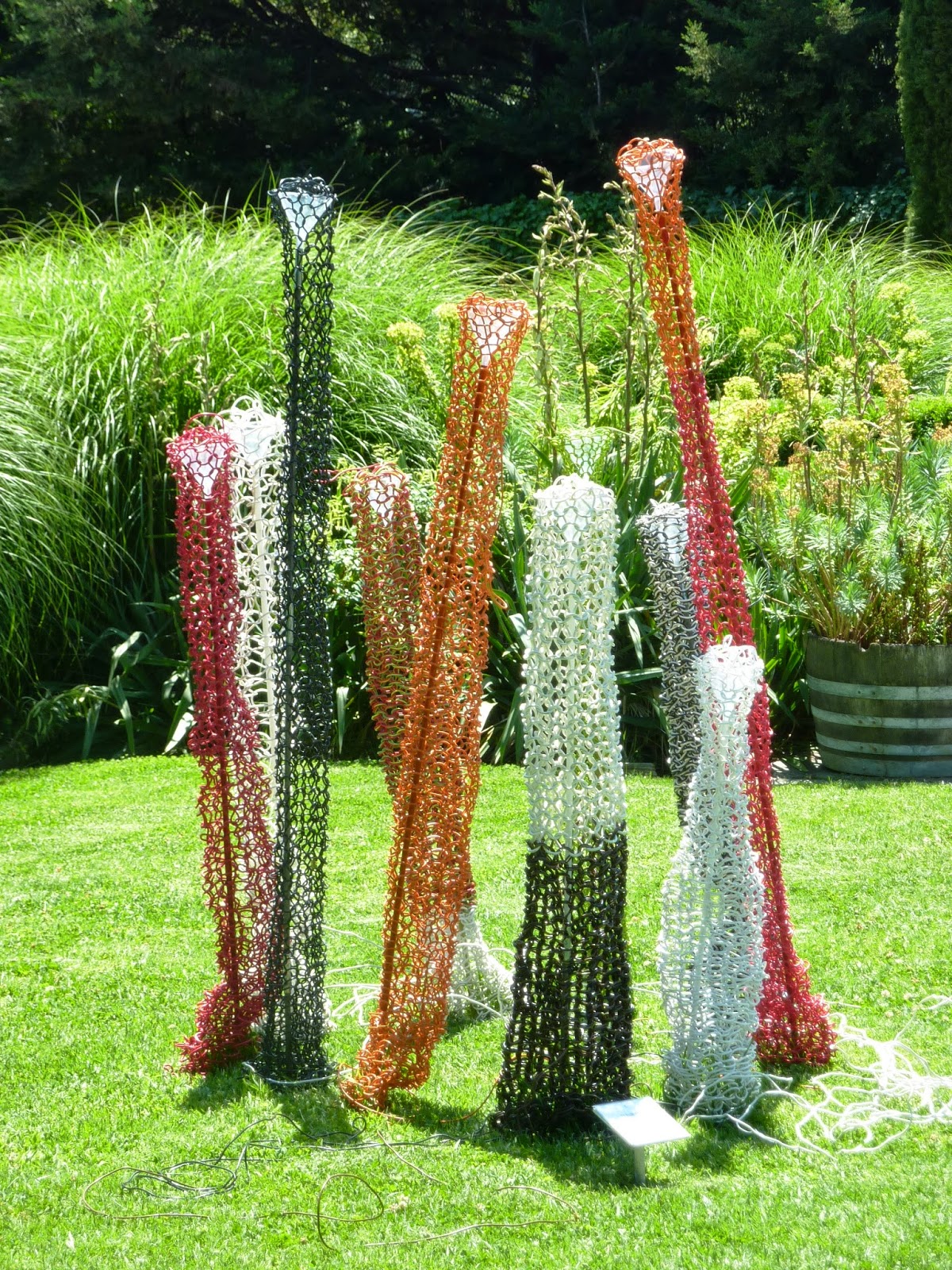I finally finished embroidering my picture of Moreton Bay Fig tree roots and am now ready to stretch the work and frame it. I am rather pleased with it. It was worth the months of work and the occasional swearing when my Maine Coon kittens stole my embroidery threads.
I have started on a new embroidered piece - a landscape- which will appear in future blogs, and have finished blocking a new quilt which I am getting ready to embroider too:
Recognise the fabrics?
Inspired by the Junk Art Mail Collective - especially the work of Virginia A Spiegel and Jacki Long, I have been experimenting with collage and come up with these three pieces. This is my first and it is a, rare for me, abstract piece:
I was so pleased with it that I created this more colourful work, adding an ink background. It is inspired by all the presents and decorations associated with Christmas:
My last one, and I think my favourite, is my tongue in cheek ode to the materialism of Christmas:
They are so much fun to do that I can tell I'll be doing a lot more. I have found myself poring over junk mail these days instead of tossing it in the recycling bin. Quite a change!
As well as working on my own projests, I have been preparing samples for classes that I am starting next year for women preparing to get back into the workforce after suffering various forms of hardship in their lives. I plan to prepare a lot of examples of projects they could try and let them decide what they would like to work on. Felt birds like these, which have been embroidered and stuffed lightly could be turned into mobiles, either in groups or as individual birds:
Crocheted little circles like these could be used as coasters, joined together to form garlands, or joined together to form a quilt.
Tonight, I am experimenting with paper roses and I am trawling Pinterest to get other ideas for crafts. Stay tuned for further examples. We plan to have a market at the end of the course for the women to sell their wares. It is exciting to think that all the individuals will come up with new and interesting pieces.
As 2014 winds down, I look back and am amazed at the variety of projects that I have tried and completed this year. I am still missing my friends and fellow artists in Brisbane, but am pretty chuffed that the encouragement I got from them is continuing to bear fruit in Melbourne. Even though my life is much busier here and I feel like I have much less time for creating than I would like, I have achieved a lot and learned a lot of new techniques too here in Melbourne. I can't wait to see what 2015 brings!
I hope my readers have had as great a year as I have and that they have a wonderful Christmas break with loved ones. May 2015 be creative, stimulating and fun for us all!.




























































